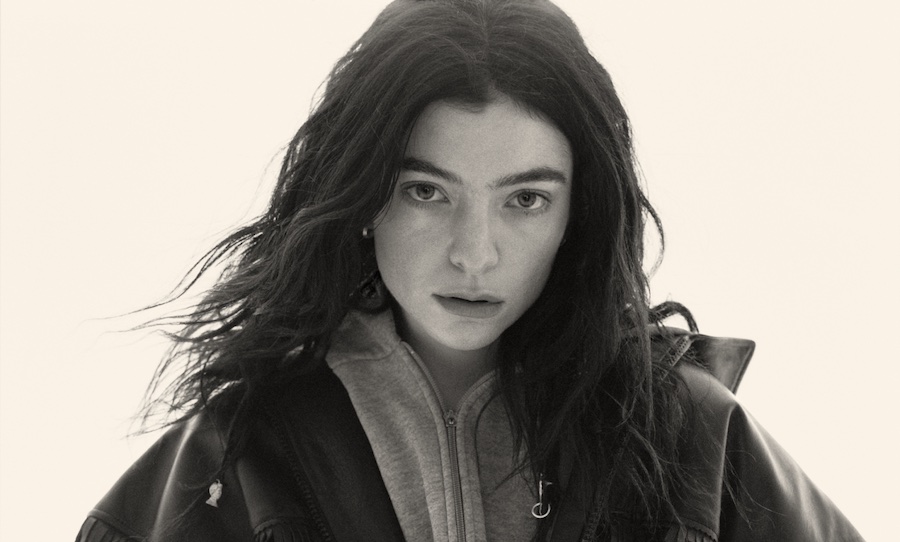In honour of New Zealand music month, Happy Mag is taking a look back at one of the country’s shiniest anti-pop stars.
Nearing a decade since its release, Lorde’s 2013 debut album Pure Heroine still reverberates within the music landscape, showcasing the success that comes from both defying and adhering to the models of pop-stardom.
Arguably one of New Zealand’s biggest artists, Lorde — known offstage as Ella Marija Lani Yelich-O’Connor — burst into the spotlight by way of timing with smash hit single Royals, though the talent that underpinned that song proved her breakout was undeniably well-deserved.

From its heralding of a new kind of pop vocalist to its vivid portrait of adolescence, Pure Heroine paved the way for a host of musicians and sub-genres that followed, as defined by a near-perfect collection of singles.
A sonic middle-finger to the sugary pop formula that would otherwise define her, Lorde’s Pure Heroine is a worthy entrant into Happy Mag’s Why It Mattered series, where we trace the importance of some of history’s most enduring records.
In celebration of New Zealand music month, we’re combing through all the reasons why, with her debut studio effort Pure Heroine, the country’s shiniest anti-pop star still matters.
Take a look back at the seminal album — which celebrates its tenth anniversary this year — from its vivid portrait of coming-of-age to its recalibration of pop music, here’s all the reasons why Lorde’s 2013 debut album Pure Heroine still matters.
Ascending to royalty.
Despite releasing two more album’s worth of instant-classics since its arrival, Lorde is defined by Royals, the brooding breakout hit that served as Pure Heroine’s lead single. Co-written with Pure Heroine producer Joel Little, Lorde crafted the song’s lyrics within thirty minutes, a feat doubly impressive given that she was just 16 years-old at the time of writing.
Royals, with its exploration of conspicuous consumption, glamorised wealth and social classes, paves the way for Pure Heroine’s lyrical themes, while thrusting Lorde into the spotlight. Royals was the number-one song in New Zealand, Canada, and Australia, and made Lorde the youngest artist to top the US’ Billboard Hot 100 chart since 1987.
The song earned three Grammy nominations, and would go on to win for Song of the Year and Best Pop Solo Performance.
Of course, the album’s fellow singles are equally praisable, with Tennis Court and Team forming a triptych of album standouts that still define Lorde’s artistry to this day. The sheer velocity of Royals’ ascension — from humble Auckland origins to the steps of The Grammys — remains one of modern music’s most memorable debuts, a fitting rise to the throne for pop’s unexpected queen bee.
Capturing the teenage milieu.
Royals outlined a lyrical trajectory that courses all throughout Pure Heroine, which serves as a portrait of the distinct nature of adolescence in the 2010’s. Lorde uses the decade’s hyper-focus on celebrity culture, materialism and the internet as a backdrop for coming-of-age tales around house parties (Ribs), high-school cliques (Team) and social media (A World Alone).
Many artists had set their sights on teenagehood before her, but Lorde’s take on the concept felt decidedly complex, looking outwardly at — and rebelling against — the cultural systems that defined her process of growing up.
There’s a regality to being a teenager on Pure Heroine, with mentions of queen bees and the thrall of social aristocracy. While the trappings of these luxuries are appealing — with references to “jet planes, islands” and “driving Cadillacs in our dreams” — Lorde is aware of their emptiness. “We’re hollow like the bottles we drain,” she croons on 400 Lux, while A World Alone laments the fact that “maybe the internet raised us.”
This exploration of the 2010 zeitgeist and its impact on Lorde is crystallised on album opener Tennis Court. The singer criticises the type of family that touts a backyard big enough for the titular sporting field — a source of “postcode envy” — while still revelling in it as space for “showing people how little we care.”
This teenage indifference is reflected in her mention of being bored twice within the song’s opening moments. Lorde is aware of how class has informed her adolescence, but she’s simply unimpressed by tennis court-level acreage.
Recalibrating the pop star.
At the time of Pure Heroine’s release, modern pop music was almost exclusively dominated by your typical glitzy starlets. Miley Cyrus was prancing around the EMAs stage in flesh-coloured bras, while Ariana Grande continued to sing at a pitch-level usually reserved for tantrum-prone toddlers.
Then, along came Lorde, with a markedly different approach to both her visual and sonic aesthetics. The success of Pure Heroine — with its anti-pop tendencies of minimalist production, stripped-back vocals and anesthetised beats — meant that the days of pristine pop were gone.
In that way, Pure Heroine couldn’t have come at a better time. Circa 2013, the pop airwaves were relentlessly dominated by EDM bass drops, familiar dance beats and synthetic production. Lorde’s refusal to indulge in these radio-friendly trappings is the reason for her title as an anti-anthem generator, though she later proved clever enough to subscribe to some pop formulas.
Years later, with sophomore effort Melodrama, Lorde would prove she can play ball in the tried-and-true pop arena, but Pure Heroine was set on creating an arena of its own.

Flashforward to today and the sonic traces of Pure Heroine are everywhere. The argument could be made that Billie Eilish — who enjoyed one of the biggest breakouts in music history in 2017 — wouldn’t reach quite an audience without Lorde’s work beforehand, but the singer’s distinct flair is also seen sprinkled in songs by the likes of Troye Sivan, Dora Jar, and MUNA, among many others.
Take Bowie’s word for it.
As fans we can appreciate the eminence of a given artist with ease, but the knowledge is doubly satisfying when it’s echoed by fellow musician greats. Lorde’s work has garnered praise from a slew of world-class artists, with none other than David Bowie among her list of superfans. According to the late singer’s longtime collaborator and pianist Mike Garson, Bowie considered Lorde to be “the future of music.”
Reaching across the genre aisle, Dave Grohl of Foo Fighters shared a similar sentiment in 2016, describing Royals as “another revolution.” He continued: “I was so happy and relieved that my two girls were singing a popular song on the radio that had some substance and depth.” More recently, Olivia Rodrigo cited Pure Heroine as the “first record that I ever heard where I felt like there were pieces of myself and my experiences.”



